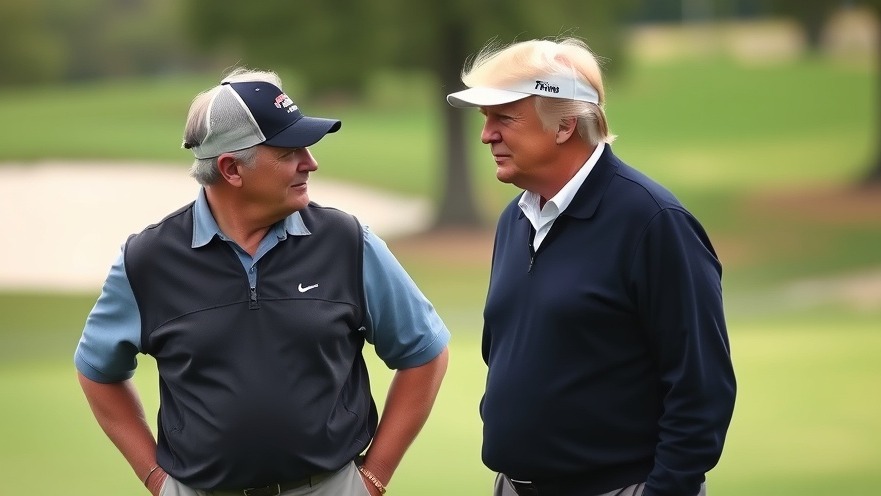
A New Chapter in US-Finland Relations
In an unexpected twist in diplomatic relations, Finnish President Alexander Stubb and former President Donald Trump recently finalized a significant $6.1 billion deal for the construction of 11 icebreakers. This deal, publicized on October 9, 2025, marks a pivotal moment for Finland, elevating its prominence on the global stage while expanding America's Arctic capabilities. Unlike many European leaders who typically rely on formal discussions and policy meetings, Stubb opted for an unconventional approach—he challenged Trump to a round of golf at Mar-a-Lago. This personal rapport not only facilitated the deal but also highlights how interpersonal connections can significantly influence international relations.
A Unique Diplomatic Strategy: Golf as a Game-Changer
The art of diplomacy has long involved a multitude of strategies, from formal agreements to cultural exchanges. However, Finland’s communication through leisure activities—specifically golf—has turned out to be a surprising yet effective tactic in building rapport with the Trump administration. According to several sources, golf games have provided a backdrop for open dialogue, allowing Stubb to navigate complex discussions with Trump in a relaxed atmosphere. This personal touch contrasts markedly with the traditional methods employed by European leaders, illustrating a potentially winning strategy for international negotiations.
The Economic Impact of the Icebreaker Deal
The signed memorandum of understanding between the U.S. Coast Guard and Finnish companies signifies more than just military cooperation; it heralds a substantial economic boost for Finland. With four of the vessels expected to be constructed in Finnish shipyards, Stubb has emphasized that this deal could create thousands of jobs in an already thriving maritime sector. The opportunity to showcase Finland's renowned icebreaker technology strengthens its export capability while fortifying relationships with the United States and potentially other allies in Arctic operations.
The Broader Context: Geopolitical Implications
In an era marked by escalating tensions in the Arctic region, particularly from powers like Russia and China, this agreement carries considerable strategic weight. The Trump administration has signaled a strong desire to reinforce Arctic defense capabilities, previously stating aspirations for a fleet of 40 icebreakers. As the U.S. currently grapples with an aging fleet, this newly proposed collaboration could position Finland as a critical partner in not only fostering economic growth but also ensuring national security in the challenging Arctic climate. The Finnish commitment to enhancing its naval presence alongside the U.S. illustrates the importance of collective security measures in the face of geopolitical challenges.
Looking Forward: Opportunities and Next Steps
As both nations move forward with plans and initiatives associated with the icebreaker agreement, much remains to be seen in terms of commercial contracts and further cooperative endeavors. Finnish companies are set to collaborate closely with U.S. shipbuilders, making this a landmark deal for shipbuilding and technology expertise. With the first icebreaker anticipated for delivery by 2028, the implications for future expansions in U.S. shipbuilding capabilities and Arctic operations are as profound as they are promising. The significance of this partnership may encourage other Nordic countries to step up cooperation with the U.S. on shared defense strategies, setting the stage for a more united front in safeguarding the Arctic.
Opening the Door for Further Collaboration
The icebreaker agreement not only exemplifies a success in U.S.-Finland relations but also creates avenues for more extensive collaboration in sectors like technology, defense, and environmental sustainability. As countries face challenging climate realities, sharing expertise on ice navigation and Arctic operations becomes increasingly crucial. The partnership exemplifies how diplomacy can integrate economic growth, technological innovation, and strategic defense objectives into one cohesive framework. Observers will closely watch as these agreements unfold, potentially reshaping other international alliances in the process.
 Add Element
Add Element  Add Row
Add Row 



Write A Comment